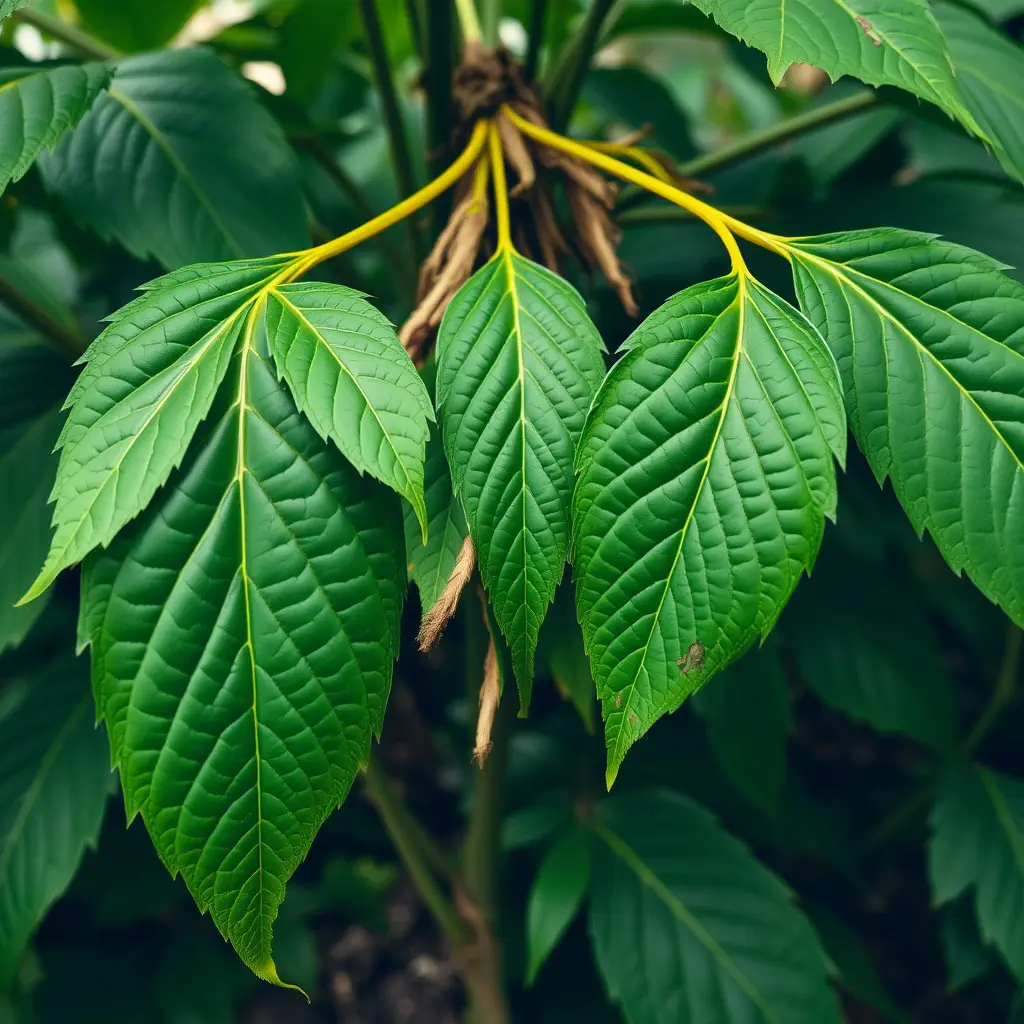Kratom, derived from the Mitragyna speciosa plant, is an emerging natural remedy for joint pain relief, attributed to its alkaloids mitraphylline and 7-hydroxymitragynine, which interact with opioid receptors for pain relief and muscle relaxation. Users often report that specific strains like Maeng Da and Bali can help manage chronic pain, inflammation, and improve mood, contributing to an enhanced sense of well-being. However, it's essential to consult healthcare providers before using kratom due to individualized dosage needs and the potential for tolerance and dependency with prolonged use. The analgesic benefits of kratom are strain-specific, with Red Vein strains like Red Bali and Red Thai known for their relaxing properties suitable for pain relief, while White Vein strains such as White Borneo and White Maeng Da offer more energizing effects. Users should be mindful of the legal status of kratom, avoid combining it with other substances like alcohol or opioids, and practice responsible use in a controlled setting to ensure safety and effectiveness for joint pain relief. This holistic approach should be part of a comprehensive pain management strategy under the guidance of a healthcare professional.
Muscle and joint soreness can hinder one’s quality of life, often resulting from intense physical activity or age-related wear. Many turn to natural remedies for relief without the side effects common to conventional pain medications. Enter kratom, a botanical supplement that has garnered attention for its potential analgesic properties. This article delves into the mechanisms behind joint and muscle pain and explores how kratom can serve as an effective, natural solution. We will navigate the optimal dosage for pain relief, adhering to safe usage guidelines, and provide a comprehensive overview of various kratom strains to help alleviate musculoskeletal discomfort. Discover how kratom might be your key to restoring comfort and mobility.
- Understanding Muscle and Joint Pain: The Role of Kratom as a Natural Remedy
- Effective Kratom Dosage for Pain Relief and Safe Usage Guidelines
- Comprehensive Guide to Kratom Strains and Their Impact on Musculoskeletal Soreness
Understanding Muscle and Joint Pain: The Role of Kratom as a Natural Remedy

Muscle and joint pain can be a significant hindrance to an individual’s daily activities, often resulting from strenuous exercise, injuries, or chronic conditions such as arthritis. The discomfort can range from mild to severe, affecting one’s mobility and overall quality of life. In this context, kratom has gained attention as a potential natural remedy for joint pain relief with kratom. Kratom, derived from the leaves of Mitragyna speciosa, is known for its diverse pharmacological properties, primarily due to its alkaloid content, which includes mitraphylline and 7-hydroxymitragynine. These compounds are believed to interact with opioid receptors in the brain, providing pain relief and promoting muscle relaxation.
For those seeking alternatives to conventional pain medication, kratom may offer joint pain relief with kratom through its analgesic effects. Users report that certain strains of kratom can alleviate chronic pain and inflammation, improve mood, and enhance overall well-being. It’s important for individuals considering kratom as a part of their pain management strategy to consult healthcare professionals. This is because the appropriate dosage and strain can vary based on an individual’s unique physiology and health profile. Additionally, while kratom may provide temporary relief, it should not replace professional medical advice or treatment plans for underlying conditions causing joint pain. Understanding muscle and joint pain through a holistic approach that includes natural remedies like kratom can be a valuable addition to the conversation on managing pain effectively.
Effective Kratom Dosage for Pain Relief and Safe Usage Guidelines

When exploring the use of kratom for muscle and joint pain relief, understanding effective dosage is crucial for achieving the desired therapeutic effects while minimizing potential risks. The alkaloids present in kratom, primarily mitragynine and 7-hydroxymitragynine, are responsible for its analgesic properties. For pain relief, a typical dosage range for kratom is between 6 to 8 grams, taken orally, for those with moderate levels of discomfort. However, individual tolerance and sensitivity can vary significantly; thus, it’s imperative to start with a lower dose, such as 2 to 3 grams, to assess one’s response before gradually increasing the amount. It’s also important to consider the specific strain of kratom, as different strains may have varying effects on pain relief.
To ensure safe usage, it is essential to adhere to certain guidelines. Firstly, avoid mixing kratom with other substances like alcohol or prescription opioids, as this can intensify its effects and increase the risk of adverse reactions. Consumption should be done in a controlled environment, and individuals should be fully informed about the legal status of kratom in their jurisdiction, as it is subject to regulatory restrictions in some regions. Additionally, frequency of use should be carefully managed; long-term daily use is not recommended due to the potential for tolerance and dependency. Users are advised to consult with a healthcare professional before integrating kratom into their wellness routine, especially if they have pre-existing health conditions or are taking other medications. Regular breaks from usage are also advisable to reset the body’s response and reduce the risk of complications associated with prolonged use. Always prioritize natural pain management methods that align with your overall health strategy and consult with a healthcare provider when necessary for personalized advice and safe joint pain relief with kratom.
Comprehensive Guide to Kratom Strains and Their Impact on Musculoskeletal Soreness

Kratom, a tropical evergreen tree native to Southeast Asia, has garnered attention for its potential analgesic properties, which may offer relief from musculoskeletal soreness and joint pain. The plant’s leaves contain alkaloids such as mitragynine and 7-hydroxymitragynine, which are thought to contribute to its pain-relieving effects. Among the numerous kratom strains, each with distinct alkaloid profiles and perceived outcomes, some are more frequently associated with pain relief. For instance, Maeng Da Kratom is renowned for its stimulating and painkilling qualities, often used to manage chronic discomfort. Another popular strain, Bali Kratom, is known for its sedating effects, which can be beneficial for those experiencing acute or chronic joint pain looking for a relaxing solution to help alleviate their symptoms.
When considering kratom for musculoskeletal soreness relief, it’s crucial to understand the nuances of each strain and their potential impacts. Red vein strains, like Red Bali and Red Thai, are typically favored for their soothing properties and are often sought after for pain management due to their relaxing effects that can help ease tension in muscles and joints. In contrast, White Vein strains, such as White Borneo and White Maeng Da, tend to offer more invigorating benefits, which might be preferable for those who need to maintain energy levels while addressing soreness. Users should approach kratom use with caution, adhering to recommended dosages and consulting healthcare professionals before integrating it into a pain management regimen, as individual responses to kratom can vary significantly. Additionally, the legality of kratom varies by region, so it’s imperative to be informed about local laws and regulations regarding its use.
Muscle and joint soreness can be a significant hindrance to one’s daily activities and overall well-being. This article delved into the mechanisms behind such discomfort and explored how kratom supplements may offer a natural avenue for relief. By examining effective dosage protocols and safe usage guidelines, readers now have a clearer understanding of how to harness the potential benefits of various kratom strains for targeted pain relief. It’s evident that kratom could play a valuable role in managing musculoskeletal soreness, potentially serving as an alternative to traditional over-the-counter medications. For those seeking natural approaches to joint pain relief with kratom, the comprehensive guide provided herein empowers them with the knowledge necessary to make informed decisions about their health and well-being.






